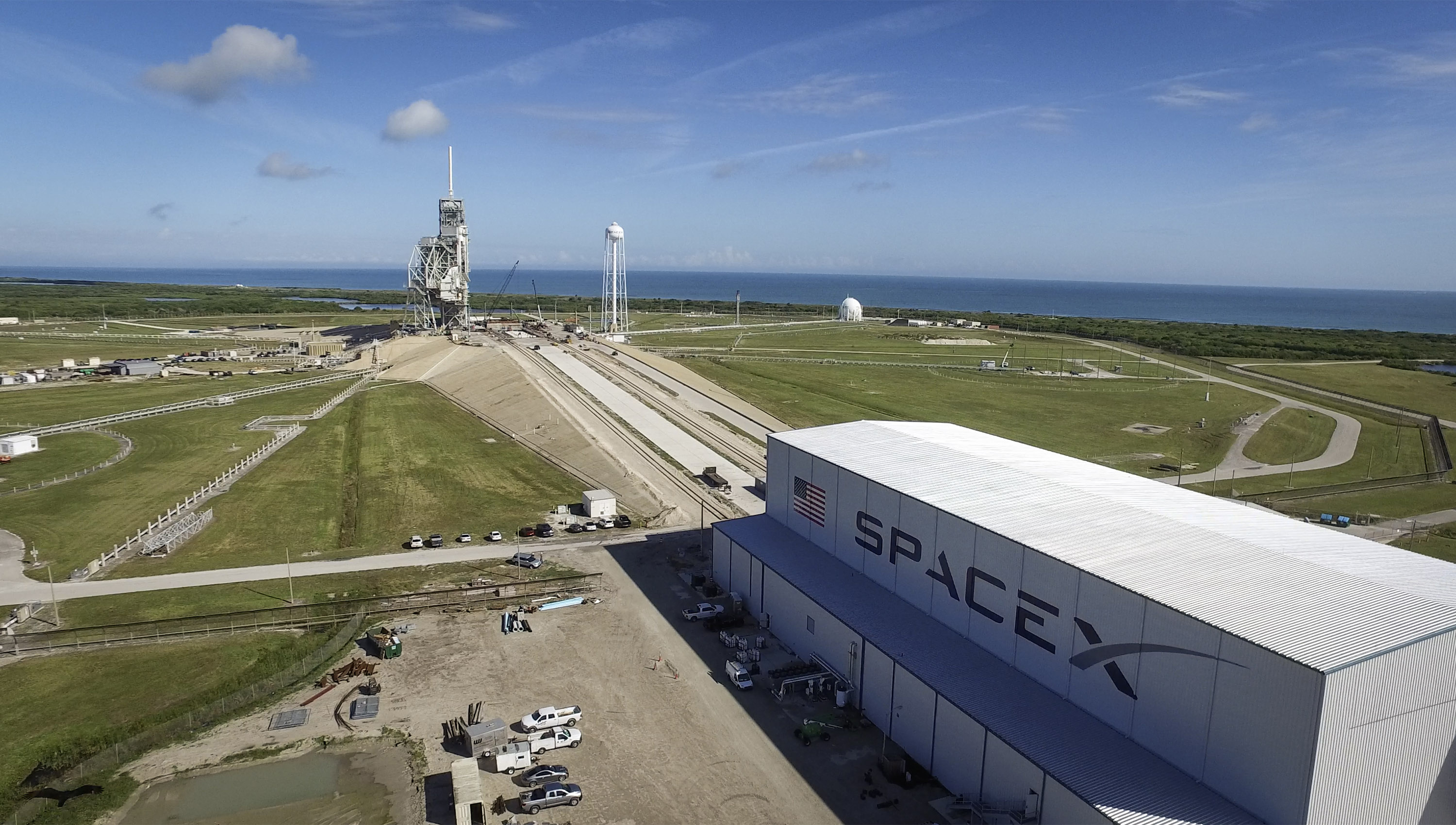SpaceX Aims to Boost Launch Rate with Completion of New Pad

SpaceX aims to boost the launch rate of its Falcon 9 rockets considerably after its new pad at NASA's Kennedy Space Center (KSC) comes online next week, Reuters has reported.
"We should be launching every two to three weeks," SpaceX President Gwynne Shotwell told Reuters Monday (Feb. 6).
The newly modified KSC pad is Launch Pad 39A, which NASA previously used for Apollo moon mission launches and liftoffs of the agency's now-retired space shuttle orbiter.
To date, Falcon 9 rockets have lifted off from two sites — Cape Canaveral Air Force Station, which is next door to KSC, and Vandenberg Air Force Base in California. The KSC pad will bring that number to three, and SpaceX is also building a fourth launch site, in Texas.
SpaceX's Cape Canaveral pad is still being repaired after a Sept. 1 explosion that occurred during a routine prelaunch test of a Falcon 9. The mishap destroyed the rocket and its payload, the $200 million Amos-6 communications satellite.
The cost of repairing the Cape Canaveral pad should end up being "far less than half" of the roughly $100 million it takes to build a new launchpad, Shotwell told Reuters.
The Sept. 1 accident grounded SpaceX until Jan. 14 of this year, when the Falcon 9 returned to flight with a liftoff from Vandenberg that delivered 10 satellites to orbit for the communications company Iridium. The Falcon 9's first stage also came back to Earth for a soft touchdown during that mission, marking the seventh such landing success for SpaceX.
Get the Space.com Newsletter
Breaking space news, the latest updates on rocket launches, skywatching events and more!
SpaceX currently has more than 70 future missions on its launch manifest, which the company has said represent more than $10 billion in contracts.
The Falcon 9 launched for the first time in June 2010 and has chalked up 28 additional missions since then. Twenty-seven of the 29 have been successful. The first failure occurred on June 28, 2015, when a Falcon 9 broke apart less than 3 minutes after launching SpaceX's robotic Dragon cargo capsule toward the International Space Station for NASA. The Sept. 1 explosion was the second failure.
Read Reuters' full SpaceX story here.
Follow Mike Wall on Twitter @michaeldwall and Google+. Follow us @Spacedotcom, Facebook or Google+. Originally published on Space.com.
Join our Space Forums to keep talking space on the latest missions, night sky and more! And if you have a news tip, correction or comment, let us know at: community@space.com.

Michael Wall is a Senior Space Writer with Space.com and joined the team in 2010. He primarily covers exoplanets, spaceflight and military space, but has been known to dabble in the space art beat. His book about the search for alien life, "Out There," was published on Nov. 13, 2018. Before becoming a science writer, Michael worked as a herpetologist and wildlife biologist. He has a Ph.D. in evolutionary biology from the University of Sydney, Australia, a bachelor's degree from the University of Arizona, and a graduate certificate in science writing from the University of California, Santa Cruz. To find out what his latest project is, you can follow Michael on Twitter.
